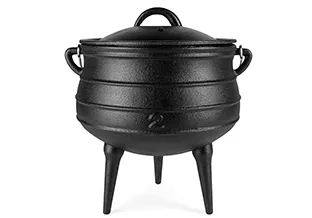
cast iron fondue
The Art of Cast Iron Fondue A Culinary Experience
Fondue, a delightful dish with roots tracing back to Switzerland, has garnered international acclaim for its communal and interactive dining experience. While traditional fondue recipes often utilize cheese or chocolate, one can elevate this dining tradition by utilizing cast iron fondue pots. These robust cookware items have been staples in kitchens for centuries, renowned for their excellent heat retention and even cooking properties. Let's delve into the world of cast iron fondue and explore how it enhances this age-old culinary practice.
The Benefits of Cast Iron
Cast iron cookware is known for its durability and versatility. It is capable of withstanding high temperatures, making it ideal for melting cheese or chocolate, as well as for cooking meat and vegetables. The even heat distribution of cast iron ensures that your fondue maintains a consistent temperature throughout, preventing any unwanted burning or scorching of the ingredients. Furthermore, cast iron cookware is naturally non-stick when seasoned properly, allowing for a smooth dipping experience without the fear of food adhering to the pot.
Preparing for Fondue Night
Preparing for a fondue night using a cast iron pot can be both fun and effortless. Begin by selecting your fondue base. For cheese fondue, classic combinations such as Gruyère and Emmental offer a rich, creamy experience. For a chocolate fondue, high-quality dark chocolate melts beautifully, especially when tempered with cream. Meat lovers may prefer a broth or oil-based fondue, perfect for cooking bite-sized pieces of meat and vegetables.
Gather your accompaniments for cheese fondue, consider a variety of dippables such as crusty bread, vegetables, and fruits. For chocolate, strawberries, marshmallows, and pretzel bites work wonderfully. If you’re opting for a broth or oil base, prepare an array of proteins—like cubed steak, shrimp, and vegetables—to create a well-rounded meal.
Setting the Scene
cast iron fondue

Fondue is best enjoyed in a convivial setting. Arrange the dining table to foster interaction, placing the cast iron pot at the center. Ensure that your table is equipped with fondue forks or skewers for easy dipping. Consider dim lighting and perhaps a candle or two to create a cozy atmosphere. Soft music in the background can enhance the overall experience, inviting guests to relax and enjoy their culinary adventure.
The Fondue Etiquette
While fondue is a social meal, it’s essential to maintain a few etiquette rules. Avoid double-dipping your fork, as fondue is a communal dish sharing with others. Instead, use a separate fork to retrieve your cooked morsels or a side plate for dippables. One fun tradition in fondue culture is the fondue prize if someone drops a piece of food into the pot, they owe the group a drink, adding an element of playful competition to the evening.
Cleaning and Maintenance of Cast Iron
After the delightful experience of fondue, proper care of your cast iron pot is crucial for its longevity. To clean, let the pot cool slightly, then use a spatula to remove any residual food. Rinse with hot water and avoid soap, as it can strip the seasoning. Dry thoroughly to prevent rust and apply a light coat of oil before storing. With regular use and care, your cast iron fondue pot can become a treasured kitchen item, passed down through generations.
Conclusion
Cast iron fondue not only serves up delicious flavors but also creates an immersive social experience perfect for gatherings and celebrations. By combining quality ingredients, thoughtful preparation, and shared laughter, a fondue night can become an unforgettable tradition in your home. So gather your loved ones, light the candles, and prepare for an evening of culinary delight with a cast iron fondue—a fusion of flavor, fun, and community!
-
Season Cast Iron Perfectly with GPT-4 Turbo TipsNewsAug.01,2025
-
High Quality Cast Iron Cookware - Baixiang County Zhongda MachineryNewsAug.01,2025
-
Premium Cast Iron Pan: Durable & Perfect HeatNewsAug.01,2025
-
High Quality Kitchen Durable Black Round Cast Iron Cookware Pancake Crepe Pan-Baixiang County Zhongda Machinery Manufacturing Co., Ltd.NewsAug.01,2025
-
Cast Iron Cookware - Baixiang County Zhongda Machinery | Nonstick, Heat ResistanceNewsAug.01,2025
-
High Quality Kitchen Durable Black Round Cast Iron Cookware - Baixiang County Zhongda Machinery | Non-Stick, Heat Retention, DurableNewsJul.31,2025


